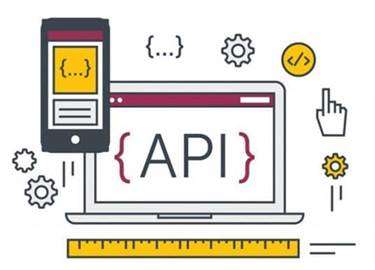Содержание
- What Is The Software Development Life Cycle?
- Sdlc Common Mistakes And Challenges
- Best Visual Reporting Tools For Product Data In 2022
- Learning Management System Lms
- Feb Lecture 8 Stages Of System Development Life Cycle
- Top 7 Companies To Land A Product Management Internship
- Stages Of The Software Development Life Cycle Sdlc
The operating environment is established, major subsystems and their inputs and outputs are defined, and processes are allocated to resources. Everything requiring user input or approval must be documented and reviewed by the user. The physical characteristics of the system are specified and a detailed design is prepared.
Development Program means the implementation of the development plan. System Development Life Cyclemeans a process that standardises security best practices across a range of products and/or applications. It captures industry-standard security activities, packaging them so they may be easily implemented. System Development Life Cycleor “SDLC” means the process of creating or altering information systems, and the models and methodologies that people use to develop these systems. Understanding of Software Development Life Cycle makes the process of project management efficient.
The systems analysis and design is the process of developing information technology systems that effectively use hardware, software, data, processes, and people to support the company’s businesses objectives. It is a process of planning a new business system or replacing an existing system by defining its components or modules to satisfy specific requirements. System analysis and design can be considered the meta-development activity, which serves to set the stage and bound the problem. SAD can be leveraged to set the correct balance among competing high-level requirements in the functional and non-functional analysis domains. System analysis and design interact strongly with distributed enterprise architecture, enterprise I.T.
Testing implies early quality control through a series of reviews and checks, which is called static testing. This method allows you to identify flaws at the earliest stages of project development and minimize errors in the future. This SDLC model is a kind of iterative-incremental combination with an emphasis on risk analysis.

By adding new steps, developers could define clearer and more effective actions to reach certain goals. Technology has progressed over the years, and the systems have gotten more complex. Users have gotten used to technology that simply works, and various methods and tools ensure that companies are led through the lifecycle of system development. Once the design specification is prepared, all the stakeholders will review this plan and provide their feedback and suggestions. It is absolutely mandatory to collect and incorporate stakeholder’s input in the document, as a small mistake can lead to cost overrun.
System planning is the process of deciding what your new information system should look like and then identifying the resources needed to develop it. Between coding and deployment, the software must go through a series of tests. It’s imperative to remove any bugs found in the code during testing. Coding problems found after deployment are often a much greater burden and make a poor impression on the user. The Manifesto for Agile Software Development was drafted and signed by a group of software developers in 2001.
Application Security Consulting ServicesTackle your most challenging security and risk management initiatives with on-demand help from experts. Synopsys offers products and services that can be integrated throughout your SDLC to help you build secure code, fast. Synopsys helps you protect your bottom line by building trust in your software—at the speed your business demands. Synopsys is a leading provider of high-quality, silicon-proven semiconductor IP solutions for SoC designs.
One thing that sharepoint greatly supported their case was that their primary business model focused on Home Health software. • The importance of maintenance is to continue to bring the new system to standards. Implementation • The implementation phase is less creative than system design.
What Is The Software Development Life Cycle?
Other more elaborate versions of the SDLC specify many subphases of these three phases. Toolshero supports people worldwide (10+ million visitors from 100+ countries) to empower themselves through an easily accessible and high-quality learning what are the stages of the system development life cycle platform for personal and professional development. This process is repeated again and again, with each iteration yielding a new version of, for instance, the software. The waterfall model was the first process model to be introduced.
As we’ll discuss later, Agile methods tend to “wind together” all of these steps into a tight, rapidly-repeating cycle. The profession of software developer has existed since the first computers and their operators, as far back as ENIAC and vacuum tubes. As the disclipine has matured, practices and methods for developing software have evolved.
Sdlc Common Mistakes And Challenges
It is crucial to maintain and modernize the system regularly so it can adapt to future needs. When a prototype is built, user feedback is required and will be applied in the next version of the prototype. Infill development means new construction on a vacant commercial lot currently held as open space. With 10+ years of experience as an IT Project Manager, I’m still an active Agile PM. That’s why all articles, videos, and career development tips come from the front line, not some academic books.

This is the step for end users to discuss and determine their specific business information needs for the proposed system. It”s during this phase that they will consider the essential components (hardware and/or software) structure , processing and procedures for the system to accomplish its objectives. The second phase is where businesses will work on the source of their problem or the need for a change.
The one thing that unites all these SDLC methodologies is the possibility to streamline complex processes by making use of various tools during each phase. Lean is also sometimes referred to as a collection of tools used to analyze the current state with the purpose of identifying strong points and inefficiencies and increasing overall performance. Additionally, this model is known for the pull structure, which means that the work is pulled only if there is a need for it to achieve maximum resource optimization.
This could include screen layouts, business rules and process diagrams. By describing the steps in the proposed algorithm or system in plain language, end-users can discuss their specific needs for the proposed system. Consider creating a master document that specifies the plan and requirements. They can choose from a variety of SDLC methodologies or models, such as waterfall, agile, spiral or incremental, to help them develop systems throughout the life cycle phases. Software engineers will follow the coding standard to develop and complete the development process according to software requirement specification. The testing stage of system development life cycle will ensure that developed system must meets the end user requirements.
Best Visual Reporting Tools For Product Data In 2022
Unnecessary risk can cost you time and money, especially in the IT industry where most software projects have some element of risk. SDLC is also an abbreviation for Synchronous Data Link Control and software development life cycle. Software development life cycle is a very similar process to systems development life cycle, but it focuses exclusively on the development life cycle of software. Once the new program or system is functioning, it’s important to continue monitoring for potential bugs, errors and any updates requested by end-users. Consider reviewing the effectiveness of the system development life cycle in this phase. Identify steps where processes ran smoothly and parts of the process you could improve next time.
- False, because the correct statement is, The spiral model is a combination of various models, typically used for large and complicated projects.
- The project team is focused on finding opportunities to eliminate waste, to drop unnecessary things like meetings, and minimising documentation.
- •independent testing of software changes prior to implementation.
- Much of the testing can beautomated, like security testing.Other testing can only be done in a specific environment – consider creating a simulated production environment for complex deployments.
- Discipline, continuous feedback and process improvement, and automation of manual development processes are all hallmarks of the DevOps model.
- Any modifications to a document, once approved, should be reviewed and all impacted groups should agree on the change.
Phase 6 begins when a huge part of the program code is completed. This phase also involves the actual installation of the newly-developed application. The project is put into production by moving all components and data from the old https://globalcloudteam.com/ system and putting them in a new one through a direct cutover. Phase 4 represents the real beginning of software production and hardware installation . Waterfallrepresents the oldest, simplest, and most structured methodology.
Learning Management System Lms
SDLC has been around since the 1960s—a time when teams were more centralized. As the information technology sphere continues to evolve, the SDLC has been changed to keep up with the ever-changing demands in system development. Newer approaches to the SDLC have emerged asDevOps, a combination of philosophies and practices that increase an organization’s ability to deliver applications more quickly.
Feb Lecture 8 Stages Of System Development Life Cycle
In contrast, the analysis and design stage in RAD is very quick, and the details of the design are developed during various prototype cycles. A number of variations on RAD have been developed, including agile software development, scrum software development and extreme programming. These approaches combine elements of rapid prototyping, iteration through cycles and responsiveness to requirements. The development phase is where the system or application’s security features are developed, configured and enabled.
Top 7 Companies To Land A Product Management Internship
In simple projects, this will be as simple as deploying the code onto a web server. In large projects, this could involve integration with many different systems. Mitigation strategy allows for decreasing the risk impact on the project. For example, proper planning and involving people with similar skills allows for the substitution of team members in case of illness.
Stages Of The Software Development Life Cycle Sdlc
Once the requirement analysis phase is completed the next sdlc step is to define and document software needs. This process conducted with the help of ‘Software Requirement Specification’ document also known as ‘SRS’ document. It includes everything which should be designed and developed during the project life cycle.
Which Sdlc Methodology Is The Best?
This SDLC tool is a key element in managing software customizations that meet the needs of the project. Git allows developers to have multiple local branches that can be entirely independent of each other. In short, Lean methodology is one of SDLC methodologies used for reducing operational costs, improving quality, increasing productivity, and improving customer satisfaction. This methodology relies heavily on two foundational credos, including continuous improvement and respect for people. Among other things, the development team will mull over the core components, structure, processing, and procedures for the system to reach the stated goal.
SDLC process aims to produce high-quality software that meets customer expectations. The system development should be complete in the pre-defined time frame and cost. SDLC consists of a detailed plan which explains how to plan, build, and maintain specific software. Every phase of the SDLC life Cycle has its own process and deliverables that feed into the next phase. SDLC stands for Software Development Life Cycle and is also referred to as the Application Development life-cycle.
Is performed by professionals who possess appropriate interpersonal, technical, analytical, and management skills. It means that there will be less wasted effort, so a client can expect better ROI. Thus, the V-model requires the appropriate discipline and a rigorous timeline. The difference is how these phases are structured and which one gets the largest share of the attention. Ensures that the project is feasible from financial, organizational, and technological points of view and sets a deadline needed to bring the idea to reality. Once the system is deployed, any necessary upgrades, enhancements, and changes can be made, implementing new features into the operating software.
At the same time, the Waterfall methodology is a linear and documentation-laden project management process with terminal phases. It means that each stage must be finalized before the next phase can start and there is no overlapping in the phases. The Waterfall methodology is usually broken into seven steps, which require painstaking planning using a Gantt chart. The maintenance stage is the final stage of the SDLC if you’re following the waterfall structure of the software development process. However, the industry is moving towards a more agile software development approach where maintenance is only a stage for further improvement.
From the maintenance phase, a software update or new feature will kick off the SDLC again. As such, it is important to develop a good ongoing relationship between the client and software development company. In this phase, a designer takes the system requirements document created in the previous phase and develops the specific technical details required for the system.







































